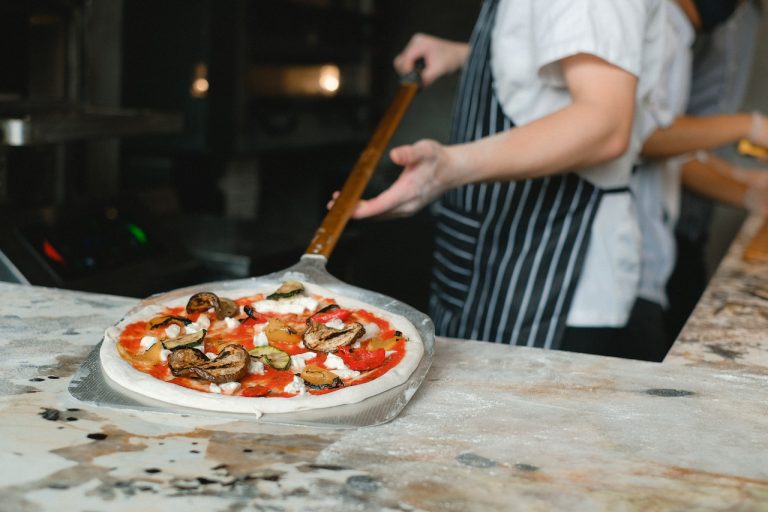A Guide to Matching Italian Wines with Your Meal
Picture this: You’re seated at a rustic wooden table on a charming terrace overlooking the rolling hills of Tuscany. A warm breeze carries the scent of fresh basil and ripe tomatoes, while the sun dips below the horizon, casting a golden hue over the vineyards. Your heart yearns for a glass of the perfect Italian wine to complement the feast that awaits. But which one to choose?
Italian cuisine is a magnificent symphony of flavors, each dish telling a story deeply rooted in tradition and history. To elevate this culinary experience to the highest level, one must master the art of wine pairing. In this article, we embark on a journey through the enchanting world of Italian wines, exploring their rich diversity and discovering the secrets to matching them harmoniously with your favorite Italian dishes. So, grab a glass, and let’s uncork the magic of Italian wine pairing!
The Italian Wine Mosaic
Italy, a country synonymous with romance, art, and passion, boasts a wine culture as diverse as its landscapes. From the sun-soaked vineyards of Sicily to the Alpine terraces of Alto Adige, Italy’s winemaking regions offer an astonishing array of grape varieties and styles. To master the art of wine pairing, one must first understand the Italian wine mosaic.
The vast Italian wine spectrum can be broadly categorized into four main regions:
A. Northern Italy: Known for its crisp whites and elegant reds, Northern Italy includes famous wine regions like Piedmont, Veneto, and Friuli-Venezia Giulia. Nebbiolo grapes thrive here, giving birth to the regal Barolo and Barbaresco wines, while Veneto offers the world-famous Prosecco and Amarone.
B. Central Italy: Home to the iconic Tuscan region, Central Italy is celebrated for its robust red wines like Chianti, Brunello di Montalcino, and Vino Nobile di Montepulciano. Sangiovese, the heart and soul of Tuscan wines, is the star here.
C. Southern Italy: In the sultry south, you’ll find a treasure trove of rich, full-bodied wines. Campania’s Aglianico, Sicily’s Nero d’Avola, and Apulia’s Primitivo are just a few of the southern gems that beckon wine enthusiasts.
D. The Islands: Sicily and Sardinia stand apart with their unique terroirs. Sicily offers volcanic wines like Etna Rosso and Marsala, while Sardinia’s Cannonau wines are robust and flavorful.
Decoding Italian Wine Labels
The labyrinthine world of Italian wine labels can be a daunting maze to navigate. However, decoding these labels is the key to finding the perfect pairing for your meal. Here are some essential elements to look for:
A. Appellation (DOCG, DOC, IGT): Italian wines are classified into three main categories – Denominazione di Origine Controllata e Garantita (DOCG), Denominazione di Origine Controllata (DOC), and Indicazione Geografica Tipica (IGT). DOCG represents the highest quality, followed by DOC, and then IGT, which is more loosely regulated.
B. Grape Variety: Italian wine labels may or may not specify the grape variety used in the wine. Familiarize yourself with the common grapes of each region to make informed choices.
C. Vintage: The year the grapes were harvested is a crucial factor, as it greatly influences the wine’s flavor profile. Some years produce exceptional wines due to favorable weather conditions, so vintage matters.
D. Producer: The producer’s name can also be an indicator of quality. Certain wineries have earned stellar reputations for consistently crafting exceptional wines.
The Art of Pairing
Now that we’ve laid the foundation of Italian wines let’s dive into the delightful realm of pairing them with food. The goal is to create a symphony on your palate, where the wine enhances the flavors of the dish, and the dish elevates the wine’s character.
A. Sparkling Wines
Prosecco: This effervescent delight from Veneto is the perfect aperitif, with its crisp, clean taste and lively bubbles. Pair it with light seafood, bruschetta, or fresh fruit salads.
Franciacorta: Italy’s answer to Champagne, Franciacorta hails from Lombardy. Its elegance pairs wonderfully with oysters, sushi, or creamy risotto.
B. White Wines
Pinot Grigio: A zesty and refreshing wine, Pinot Grigio from Northern Italy is an excellent match for seafood pasta, chicken piccata, and light salads.
Vermentino: This bright and citrusy white from Sardinia pairs beautifully with grilled fish, pesto dishes, and Mediterranean fare.
C. Red Wines
Chianti: The quintessential Tuscan red, Chianti complements classic Italian dishes like pasta with tomato-based sauces, lasagna, and roasted meats.
Barolo: The “King of Wines” from Piedmont is rich, tannic, and perfect with aged cheeses, truffle-infused dishes, and hearty stews.
D. Sweet Wines
Vin Santo: This luscious Tuscan dessert wine pairs heavenly with biscotti, almond cakes, and the classic cantuccini dipped in it.
Moscato d’Asti: A delightful, lightly sparkling wine, Moscato d’Asti is a match made in heaven with fruity desserts, like apple pie or peach cobbler.
Regional Pairing Gems
A. Tuscany
When in Tuscany, indulge in a classic pairing experience. Start with a glass of Vernaccia di San Gimignano with a plate of pecorino cheese. Follow it with a bottle of Chianti and a Florentine steak cooked to perfection.
B. Piedmont
In the Piedmont region, savor a bottle of Barolo alongside white truffle risotto or agnolotti del plin, a regional pasta specialty.
C. Sicily
Explore the captivating flavors of Sicily by pairing Nero d’Avola with grilled swordfish or a plate of caponata, a sweet and sour eggplant relish.
Beyond Tradition: Experimentation and Innovation
While tradition is at the heart of Italian wine pairing, modern culinary experimentation can lead to exciting discoveries. Don’t be afraid to break the rules and venture into uncharted territory. A spicy Primitivo with pizza or a buttery Chardonnay with carbonara can be surprisingly delightful pairings.
Tips for the Perfect Italian Wine Experience
A. Temperature Matters: Serve your wine at the appropriate temperature to bring out its full potential. Whites are generally cooler than reds, and a slight chill can enhance their refreshing qualities.
B. Glassware: Invest in quality wine glasses designed for specific wine types. The right glass can significantly affect the wine’s aroma and taste.
C. Wine Storage: Store your wine in a cool, dark place with a stable temperature to preserve its quality.
D. Aeration: Allow red wines to breathe by decanting them before serving. This helps release their aromas and flavors.

Conclusion
The magic of Italian wine pairing lies in its ability to elevate a meal to a sublime experience. As you sip and savor, you embark on a journey through Italy’s diverse terroirs, each bottle a testament to generations of winemaking mastery.
So, the next time you gather around the table for a hearty Italian meal, let your choice of wine be a symphony conductor, orchestrating a harmonious blend of flavors and aromas. As you explore the world of Italian wines, remember that the perfect pairing is not just about tradition; it’s about creating unforgettable memories and moments of pure culinary bliss. Cheers to the art of Italian wine pairing!




